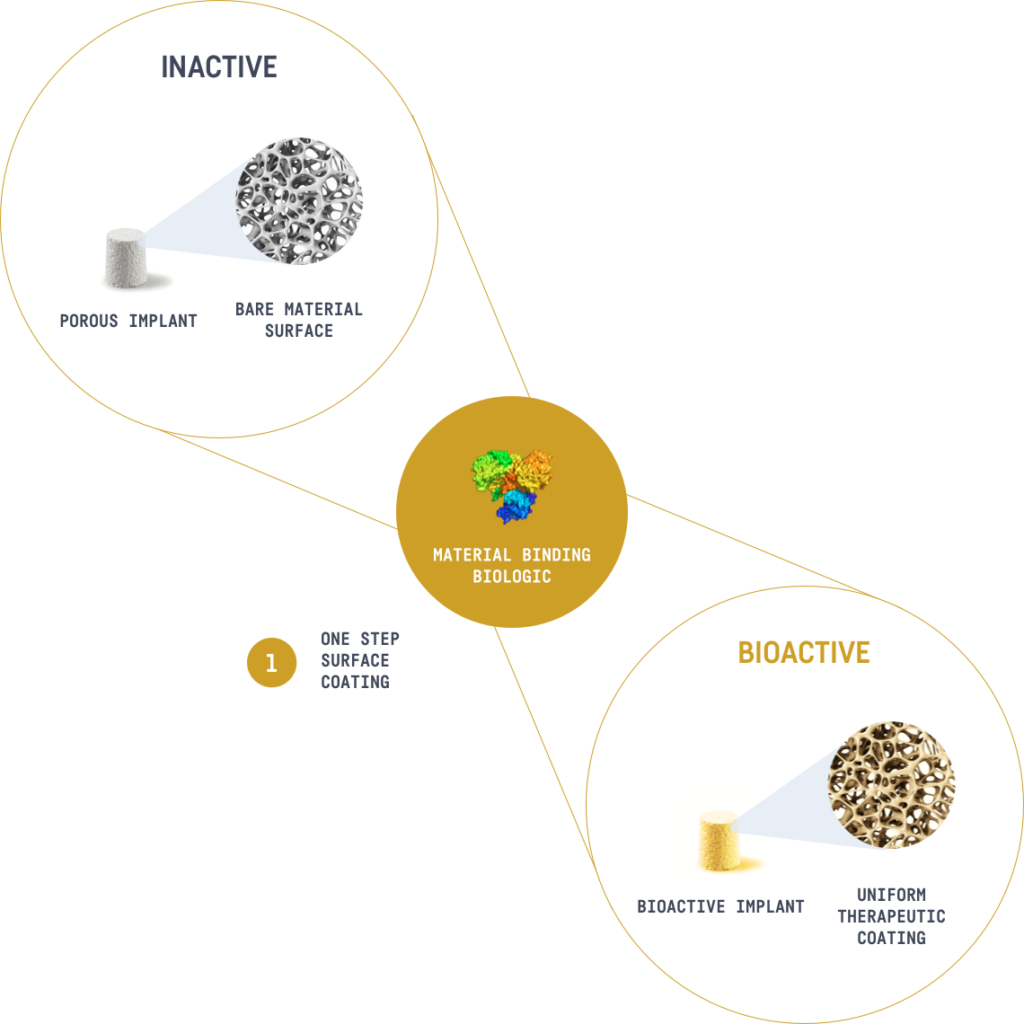One of the most interesting developments in the additive manufacturing (AM) industry is the involvement of legacy original equipment manufacturers (OEMs) entering into the regenerative medicine space, further redefining what it means to be a manufacturer in the modern era. The most notable player in this regard is 3D Systems (NYSE: DDD), which has announced a partnership with Theradaptive aimed at advancing bone and tissue growth solutions using 3D printing technology.
Established in 2016, Theradaptive is a Maryland-based company that has developed a therapeutic delivery platform for new treatments in areas like spine, orthopedics, and soft tissue repair, as well as in targeted immuno-oncology. The platform transforms recombinant proteins into material-binding variants for coating implants, devices, and injectable carriers, enabling precise therapeutic delivery to any location in the body. Focused on previously unreachable clinical areas such as vascular, soft tissue, and orthopedic repair, along with targeted chemotherapeutics, this method has so far demonstrated superiority over standard care in preclinical studies, including those at institutions like the Cleveland Clinic and Mayo Clinic.
After a $26 million Series A round in June, the startup now has over $50 million in total funding, as well as three medical device designations from the U.S. Food and Drug Administration. 3D Systems and Theradaptive will work together to explore applications of Theradaptive’s protein-engineering technology in conjunction with 3D Systems’ 3D printed medical devices. The goal is to develop new treatment options that may improve patient healing outcomes. On top of that, 3D Systems has made an $8 million investment into the company.
3D Systems in the Medical and Bioprinting Landscape
As a pioneer in personalized healthcare solutions, 3D Systems has a rich history in medical devices. The company has worked with surgeons for over a decade to plan more than 150,000 patient-specific cases and additively manufacture over two million implants and instruments. Since its bold move into the bioprinting space in 2021, the company 3D Systems has also established itself as a frontrunner in the bioprinting. This includes a partnership with United Therapeutics to develop bioprinted lung scaffolds; the acquisitions of Volumetric and Allevi, later spun out as Systemic Bio; and the recent release of tissue products.
While the collaboration with Theradaptive highlights one direction of 3D Systems’ strategy, it’s worth mentioning that the company is also in discussions with Stratasys (Nasdaq: SSYS) regarding a potential merger. The long-time competitor formally entered the regenerative medicine space this year when it teamed up with CollPlant (Nasdaq: CLGN) to create an industrial solution for breast implant production using CollPlant’s rhCollagen material on Stratasys’s P3 printers.
The move was notable given CollPlant’s previous co-development agreement with 3D Systems. If the plan to combine Stratasys and 3D Systems has been a long time in the making, CollPlant’s decision to work with both makes more sense, as does 3D Systems’ overall neglect of its own inkjet printing technology. After all, Stratasys’s PolyJet is much more developed and has secured the dominant market share.
If 3D Systems and Stratasys do merge, they will create a formidable presence in the medical space. Under previous CEO Vyomesh Joshi, 3D Systems solidified its medical 3D printing business, creating a solid workflow for medical implants. Meanwhile, Stratasys’s PolyJet has proven ideal for anatomically accurate medical models, which it offers as a service through Ricoh.
Regardless of what happens with Stratasys, there are numerous possibilities for a collaboration with Theradaptive, as incorporating targeted treatments into 3D printed implants could yield better results than with traditionally made devices. The porous structure typically used in 3D printed implants could offer the perfect nooks in which to seed Theradaptive medicines, thus representing another step forward in personalized medicine.
Images courtesy of Theradaptive.
Subscribe to Our Email Newsletter
Stay up-to-date on all the latest news from the 3D printing industry and receive information and offers from third party vendors.
You May Also Like
3D Printing News Briefs, April 27, 2024: Research, Digital Dentistry, Cycling, & More
We’re starting today’s 3D Printing News Briefs with some research into 3D printed luminescent quantum-dot polymer architectures and free-form laser beam shaping, and then on to an open source 4-axis...
HP & INDO-MIM Collaborate to Boost Metal 3D Printing in India
HP Inc. and INDO-MIM, a US- and India-based supplier of metal injection molding (MIM) powders and contract manufacturer, have announced that the two companies will collaborate to accelerate additive manufacturing...
3D Printing News Briefs, February 17, 2024: Shot Blasting, Service Bureaus, & More
In today’s 3D Printing News Briefs, we’re starting out with post-processing, as SKZ Würzburg is using a shot blast system from AM Solutions for its research. Moving on to business,...
3D Printing News Unpeeled: Not That Kind of Organ 3D Printing
GKN Aerospace will create a 150 jobs in Trollhattan Sweden with an investment of $60 million part of which comes from the Swedish Energy Agency’s Industriklivet initiative. The investment will...































